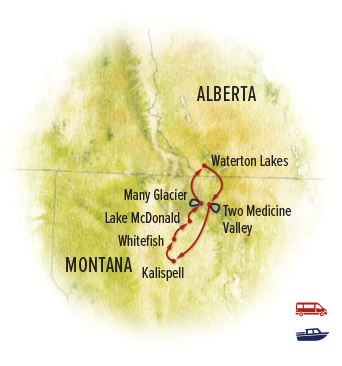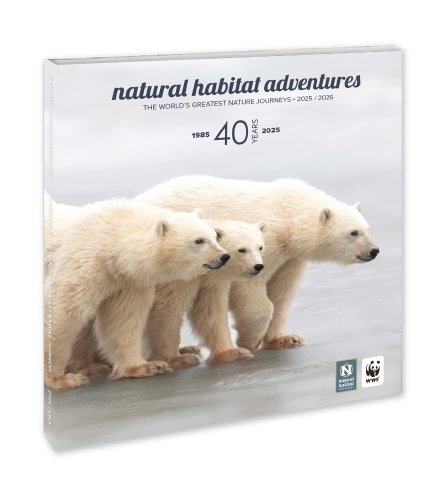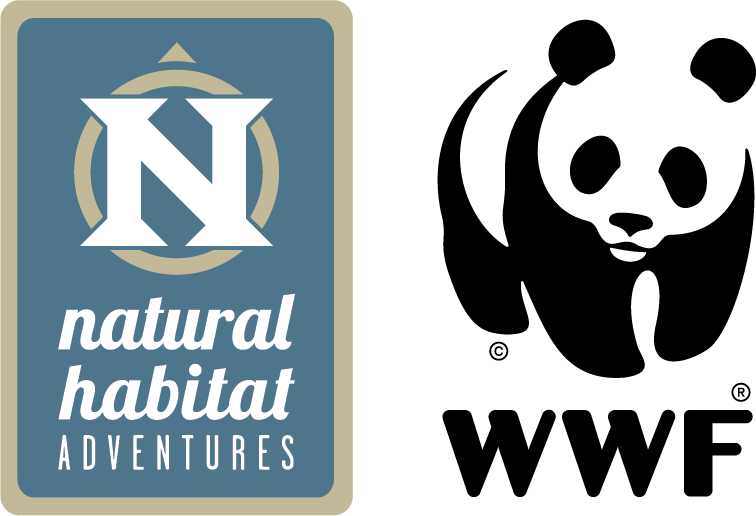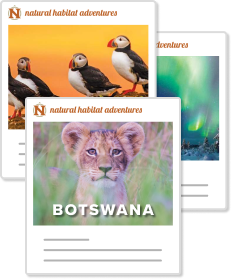Itinerary
Our Photo Expeditions are limited to 10 guests and guided by a naturalist Expedition Leader who is also an expert nature photographer and instructor. (Departures with more than seven travelers will travel with two Expedition Leaders.) Photography workshops are included throughout, with field tutorials for capturing memorable images of landscapes, wildlife, wildflowers and more. No matter your ability level, your guide is by your side with personalized tips and coaching, to help you take your nature photography to the next level.
Surrounded by ranchlands and framed by the dramatic peaks of Glacier National Park, Kalispell is a gateway to Glacier National Park. Upon arriving, transfer to nearby Whitefish, a photogenic Old West town with an historic railway depot and weathered wooden storefronts that evoke Montana’s frontier past. Early arrivals may stroll the town streets with camera in hand to capture the textures of rustic western architecture against the backdrop of modern daily life. Tonight, gather with your Photo Expedition Leaders at our welcome dinner for an overview of the week ahead and a brief discussion of photo opportunities, gear and an informal question and answer session
Day 2: Glacier National Park—Trail of the Cedars / Going-to-the-Sun Road / Lake McDonald
Drive this morning to Glacier National Park, one of the most treasured natural landscapes in the United States. Famous for its ice-carved valleys and dramatic mountain peaks, Glacier contains some of the most pristine natural ecosystems left in the Lower 48 states. We'll have abundant opportunities to see and photograph many of the species that call it home, including the mountain goat, the park's emblematic animal.
Our focus today is the west side of the park, and we begin with a walk on the Trail of the Cedars. The Lake McDonald Valley is on the interior edge of the Pacific Northwest maritime climate zone. Moisture-loving trees such as cedars and western hemlock cause the light to fracture as it streams through the forest, ideal conditions to experiment with exposure as we capture the light’s rays. A footbridge over Avalanche Gorge provides dramatic opportunities to photograph the rushing cascades below, adjusting our shutter speeds to freeze the water’s motion and slow our shutters for a silky water capture. Later, we’ll shoot as we make our way to Logan Pass on the west side of the famous Going-to-the-Sun Road. An engineering marvel completed in 1932, the narrow byway twists and climbs around Glacier's rocky spine all the way to the Continental Divide. We’ll use the road as a leading line as we work on sweeping landscape photography. Descend to spend the night at Lake McDonald Lodge, a historic hostelry inspired by Swiss alpine architecture. Explore the lakeshore to capture the multicolored rocks in the crystal-clear water, or relax in front of the massive stone fireplace in the hotel's famous lobby.
Day 3: Going-to-the-Sun Road / Many Glacier
Rise early this morning to practice shooting sunrise, as the golden hour morning light illuminates this stunning landscape and overarching sky. The colors and contrasts are magnificent. Don’t worry, though, if today’s shots aren’t exactly what you hoped for—we’ll have ample opportunity to photograph more sunrises in the days ahead.
We spend the morning shooting images from more trails on the west side of the Continent Divide, working on stopping motion as we photograph waterfalls, framing and composition of the serrated peaks, and wide-angle landscape shots. Then we climb the Going-to-the-Sun Road once more, traversing the Continental Divide in the heart of the park. As we continue down the east side, learn about the Lewis Overthrust fault and the region's tumultuous geological history, studied by scientists from around the world.
This afternoon we enter Many Glacier, one of the park's classic glacial valleys. Have your telephoto lens handy as we keep an eye out for black bears and grizzlies feeding among the bushes in avalanche chutes, bighorn sheep perched on cliffs, and elk grazing in the meadows. This will be our first chance to zoom in on wildlife, using lower aperture and faster shutter speeds. Our destination for the next two nights is Many Glacier Hotel, built in 1915 as a grand Swiss-style chalet in the "American Alps," in the vision of the railway barons behind its construction. It sits on the edge of Swiftcurrent Lake overlooking a panorama of crenellated peaks.
Day 4: Many Glacier—Swiftcurrent Lake Cruise / Hike to Grinnell Lake
After several days of intensive instruction, practice what you’ve learned to date with the freedom to shoot the sunrise from your location of choice. And then it’s on to more landscape photography. Incorporate yesterday’s insight as we explore the broad, glacial valley that formed some 10,000 years ago. Many Glacier features ragged crags, waterfalls that glissade from icy ledges, and alpine lakes set like gems in the rocky backdrop. Here, we capture the mountains’ reflection on the lake’s surface and use a circular polarizer to shoot the famous rocks on the bottom of the lake.
We see why the Blackfeet gave the name "Backbone of the World" to the greater Glacier Park ecosystem. On a narrated boat tour across Swiftcurrent Lake, photograph the panorama of Mount Grinnell, Angel Wing and surrounding peaks. Learn about the geology and ecology of our environs as we get within view to photograph Grinnell Glacier, an experience future visitors may be less likely to have as climate change hastens its melting. Depending on the angle of the sun, the lake may appear opaque turquoise, the result of glacial silt suspended in the water as it flows down the mountain from Grinnell Glacier. On an easy hike to Grinnell Lake, be ready to capture for wildlife and raptors soaring overhead. These features bear the name of George Bird Grinnell, an early American conservationist, explorer and founder of the Audubon Society. He was so inspired by the scenery during his first trip to the area in 1885 that he spent the next two decades working to establish it as a national park.
Day 5: Waterton Lakes National Park, Alberta—Hikes to Akimina Lake & Bertha Falls
This morning, we drive north across the Canadian border to spend two days exploring Waterton Lakes National Park. As Glacier's sister park, Waterton shares a border and an ecosystem, as well as joint UNESCO World Heritage Site status. In 1932, these two parks together became the first International Peace Park. Here where Alberta’s prairies meet the peaks of the Rockies, Waterton is a continuation of Glacier's stunning landscapes, and opportunities abound to photograph this less-visited region.
With your Photo Expedition Leaders, explore a range of trails that capitalize on the panoramic vistas with sturdy spots from which to capture the landscape. On a short hike to Akimina Lake, we may photograph wildlife—moose are often seen munching on vegetation at the bottom of the shallow lake. We'll also ascend through a mixed aspen forest on a hike to Bertha Falls, a series of cascades that course down the mountainside. Practice macrophotography as we capture the vibrant beauty of wildflowers and the marshy forest, and then pivot to wide-angle landscape photography as you capture the spectacular view from Bertha Point that overlooks Upper Waterton Lake and its surrounding peaks. Tonight, we photograph the sunset over Upper Waterton Lake.
Day 6: Crandell Lake Hike / Upper Waterton Lake Boat Cruise
Capture the intricate details of forest ecology this morning with a mellow hike through a regenerating burn area to pretty Crandell Lake, which sits in a low forested saddle between Ruby Ridge and imposing Mount Crandell. The contrast between blackened and dead snags against the lush and colorful forest floor tells the story of nature’s resilience, and our photo session covers depth of field, composition and macro techniques. Wildflowers abound in summer, and we may see the delicate Baker's mariposa lily, purple bee balm and flowering bear grass.
Later this afternoon, aboard the M/V International on Upper Waterton Lake, cruise south to Goat Haunt, Montana, at the lake’s end point just over the U.S. border. This historic vessel first began taking visitors to admire the views of waterfalls and sheer mountain cliffs in 1927. As we ply the sparkling blue waters, look for bears, moose, bighorn sheep, mountain goats and bald eagles. Once we return to our hotel, opt to wander around the small townsite with your camera, looking for deer and bighorn sheep that often graze upon the lawns in the soft evening light.
Day 7: Waterton / Glacier National Park—Logan Pass / East Glacier
After a final morning in Waterton Lakes, return to the American side of this International Peace Park via the Blackfeet Reservation on the park’s eastern edge. Then it’s time to climb to the alpine heights once more as we reach Logan Pass on the Continental Divide. On top, we work on alpine photography, capturing both the grandness of the landscape with wide-angle shooting and the delicate details of the mountain’s composition. Walk the Hidden Lake Overlook Trail over tundra thick with white bear grass, glacier lilies and other wildflowers. Look for abundant wildlife, including bighorn sheep and the shaggy white mountain goat that is the Glacier Park’s emblematic animal. Listen for the whistle of hoary marmots darting among the rocks, and keep your telephoto handy as we look for black bears and grizzlies feeding among the bushes in avalanche chutes.
Descend to spend two nights in East Glacier, the eastern gateway to the park, where the sacred lands of the Blackfeet Nation stretch from the rolling prairie to the towering peaks of the Continental Divide. For millennia, the Blackfeet people have revered this landscape as a place of deep spiritual significance, honoring the region as "the Backbone of the World." In 1910, President William Taft established Glacier National Park, preserving 1 million acres as part of America's collective national heritage.
Day 8: Sunrise Photography in Two Medicine Valley / Blackfeet Cultural Presentation
Rise early to greet the dawn as we head out to capture the alpenglow on Two Medicine Lake and the peaks that ring it. Spend the morning exploring more of the region, then delve deeper into the natural and cultural history of Glacier and the Two Medicine Valley with a member of the Blackfeet Nation this afternoon. Our guest speaker meets our group at Running Eagle Falls, a place significant to the tribe, to share the cultural heritage of the Blackfeet people who have been integrated with this landscape for centuries. We also drive over a portion of the Blackfeet Reservation today, admiring the multicolored rock layers of the mountain walls as we learn about the Blackfeet Nation’s ancient connection to this land and its creatures. Wildlife abounds here, including moose, elk and deer that graze on tall grasses in sunny meadows, plus mountain goat and bighorn sheep, grizzly and black bear, gray wolf, lynx, mountain lion and wolverine. By late afternoon, return to East Glacier where we gather for a farewell dinner.
Day 9: Kalispell / Depart
Although the photo component of our journey has come to an end, anticipation builds to review, edit and share your images. This morning we drive from Glacier National Park to Kalispell, where we meet departing flights this afternoon. Following Highway 2, our scenic route skirts the south side of the park, passing through Essex, a historic stop on the Great Northern Railway line between West and East Glacier where trains took on additional coal and water. Our journey concludes at Glacier Park International Airport in Kalispell.

























